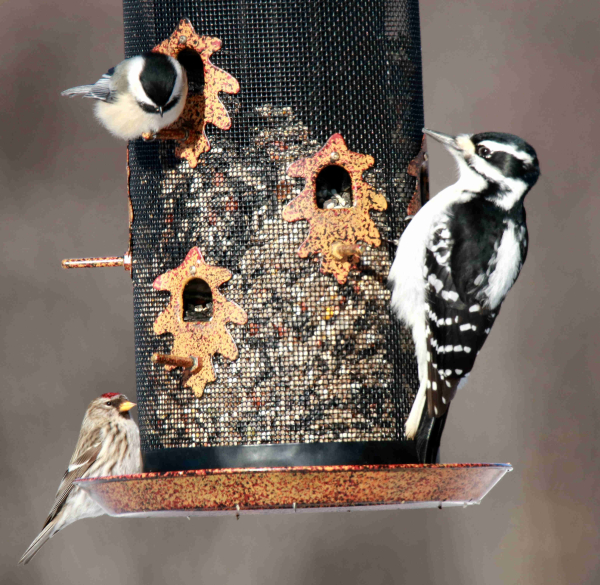Too Close for Comfort
By Glen Wunderlich
Shortly before the start of firearms deer season, I had set up a portable blind within archery range of a brassica food plot. The one-person hideout was inconspicuously concealed in a row of brush and young trees facing the prevailing wind. Experience has shown that deer – especially the more mature, and thus more educated among the herd – can spot the hideouts immediately and shy away from them. But, the new blind would provide a potential opportunity to view activity from a different perspective.
The first evening a doe and its two fawns moved into range without detecting my new cover. They fed for a while within 40 yards, when the mother deer began to turn its attention to my left. I did the same.
My adjustment in position was enough to alert one of five whitetail deer approaching. I had made the fatal mistake of moving too quickly and the leader of the group had me pegged. She began with a quick stomp to the ground and continued in a semi-circle pattern with me as a focal point of her stare. My camouflage seemed as discrete as a Wall Street protester at a bank board meeting under her prying eyes.
The small chair blind did not allow me to escape her attention, as others in the area watched her watching me. This one wise whitetail was all it would have taken to blow any chance of an opportunity, if she continued her investigation to the point of spooking. Two immature bucks now joined the brassica brunch, yet one spoilsport hadn’t finished checking me out.
As the ever-alert doe got even closer, I thought she was going to stick her neck into my open window. At that moment, the entire gathering swiveled their heads away from me directly toward a six-point buck on the prowl for love. The frisky fella stirred up the peaceful assembly and they all scampered off.
I was fortunate to get out of there without blowing my cover.
Now, weeks later I was observing the same area from a distance of approximately 125 yards within a permanent blind, when I noticed a doe and two fawns within a stone’s throw of the same portable blind. Even though the blind was vacant, the cautious mother alerted her offspring to hold position while she checked things out. Her inspection began at 40 yards and ended with an all-clear signal – but, only after an intense examination of the fabric structure from mere feet.
Whether this had been the same deer I had educated weeks earlier, it’s hard to know. In any case, several lessons are noteworthy.
First, placing a blind too close to deer congregation areas can ruin chances for a hunter. Secondly, doing so this late in the season almost guarantees failure.
While pop-up blinds are invisible to turkeys, they can be like strobe lights to wary deer. If you intend to hunt the late season with a muzzleloader, it’s best to set up at least 100 yards from the action.
Today’s modern smoke poles are certainly capable of ethically taking deer at longer ranges, and if you have yet to sight in your front-loader for the upcoming season, you may want to consider extending your point of aim to 150 yards. Closer shots will still be in the kill zone without compensating and you’ll be able to increase the odds of remaining undetected with the longer-range approach.






